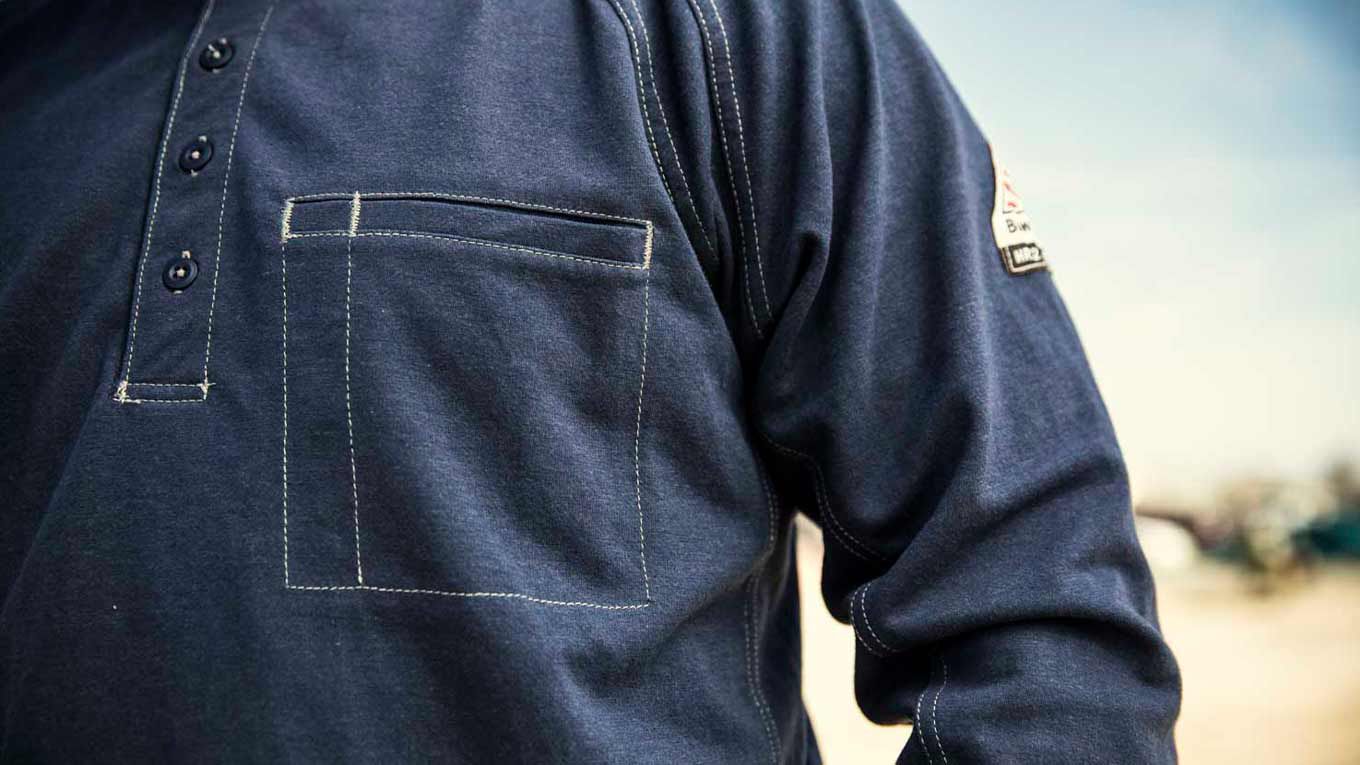What is the difference between Inherent and Treated FR?

There’s a lot of confusion when it comes to the terms “treated” and “inherent” FR. What’s the difference? And, more importantly, does one offer better protection than the other? In short, the answer is no. But in order to understand why, we must start by understanding what these terms mean and why they were applied to FR fabric in the first place.
Definition & Engineering
“Inherent” FR refers to a fabric that has FR properties—defined by the fabric’s ability to self-extinguish when the ignition source is removed—by its very nature, as a core property. In other words, a fabric is FR without any additional finishing. “Treated” FR on the other hand, refers to a fabric that has been engineered with flame-retardant chemistry to have FR properties that were not present prior to the treatment.
There are 3 levels at which FR properties can be achieved:
• The Molecular Level – Synthetic derivatives are engineered at the molecular level to be FR (e.g., Nomex, Kermel, Twaron, Kevlar, etc.)
• The Fiber Level – At this level, flame-retardant chemicals are added to the process prior to the fiber being extruded (e.g., FR Modacrylics, FR Rayons)
• The Fabric Level – FR properties are permanently imparted into flammable fabrics through a combination of chemical and mechanical processes (e.g., FR Cotton, 88/12)
History
When these terms were adopted by the FR world over 30 years ago, they reflected the durability of flame resistant technology at that time. Back then, the intent was to imply that “Inherent” was superior to “treated.” Why? Because at one time, it was true. Cotton and other cellulosic materials are naturally flammable, so they do have to undergo a chemical process, or “treatment,” to impart FR properties. And these early “treated” garments did lose their FR properties over time and after repeated washings. Treated fabrics, prior to 1987, could not compete with aramids as a durable FR alternative.
Evolution
Over the past 30 years, however, we’ve made dramatic advancements in FR technology that have blurred the lines between these two terms. “Inherent” and “treated” have become so common and so misused that the terms now create more confusion than clarity. Most popular FR fabrics today are blends of several different fibers, and this has created confusion on where and when to apply the current labels. Because “inherent” and “treated” refer to single fiber types, they fail to accurately represent today’s complex blends—which sometimes combine all 3 engineering levels. For example, what should we call a fabric that is 35% Aramid (engineered at the molecular level) and 65% FR cotton (engineered at the fiber level)? When a fabric is a combination of both inherent and treated FR fabrics, and with no rules in place about how to apply the terms, they become more confusing than helpful.
Conclusion
FR technology has come a long way. The fabrics in use today are far superior to those of just a generation previous, and the terms we use to discuss them must make the same evolution. The bottom line is, when it comes to selecting FR fabrics, the most important considerations should always be protection, comfort and durability. No matter which fabric you select, be sure that you can count on the FR properties to last, wash after wash. Bulwark offers an FR guarantee for the lifetime of the garment, on all of our products. To ensure your safety program does what it’s supposed to do: keep you and your guys safe.